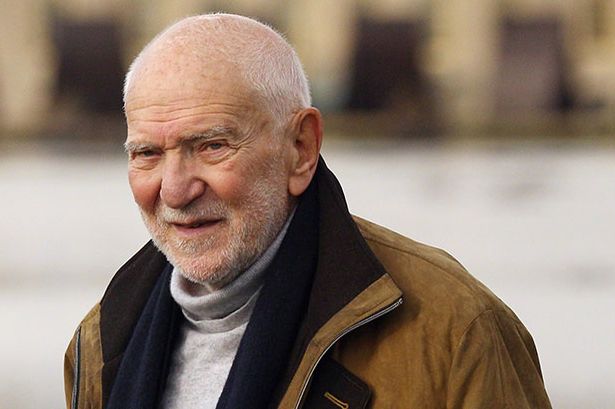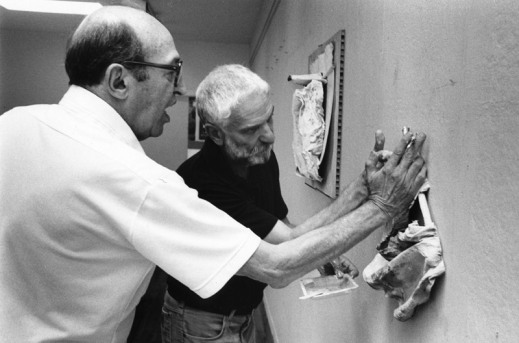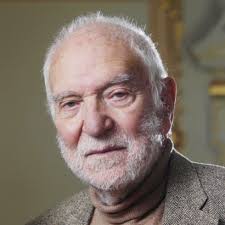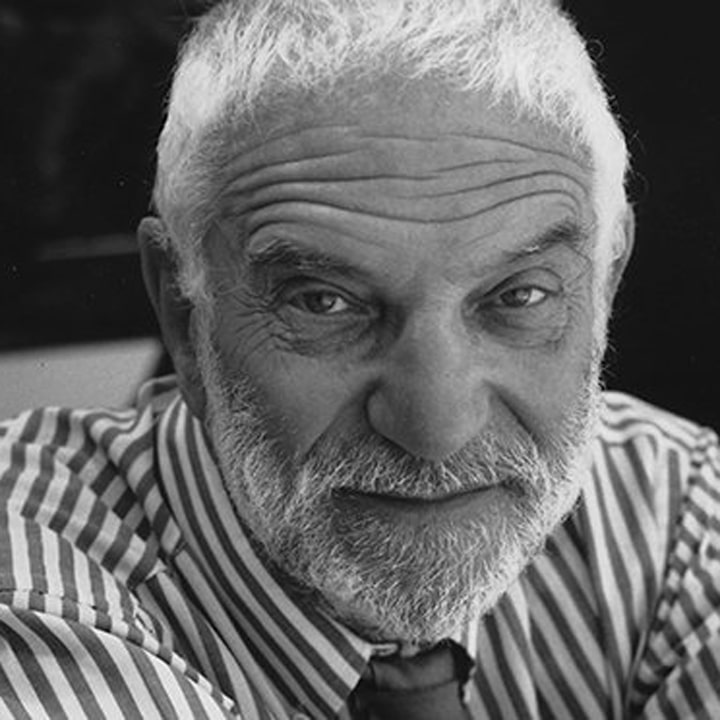
1924 - 1978
Anthony Caro

description
An outstanding British sculptor, one of the key figures in the avant-garde art of the country. Sir Anthony Caro was known for his innovative solutions, which were much ahead of their time and set the stage for future changes in three-dimensional art. Being for some time an assistant to his famous compatriot Henry Moore, the sculptor became a follower of his undertakings in the field of avant-garde sculpture, expanding the framework of the traditional idea of this art.
Caro’s most famous works are large abstract sculptures painted in one bright colour and standing on the ground, without any pedestals, allowing the viewer to take part in the composition. The sculptor created his works in accordance with the environment in which they were supposed to be installed. He always insisted on the direct connection of architecture with sculpture, and even coined a special term for works that are at the junction of these two types of art – “Sculpitecture”.
Of great importance were also the many years of Caro’s teaching activity. His unconventional approach to form and space opened up new possibilities and had a great influence on young sculptors. Among his students at different times there were such outstanding personalities as Philip King, Barry Flanagan and Richard Long, called the “new generation” of English sculpture.
Key ideas:
– During the period of work under the leadership of Henry Moore, Caro created figurative works in a simplified synthetic manner. He started working in the style of abstract art after visiting the USA and getting acquainted with the works of Abstract Expressionists, in particular, David Smith, who created huge metal structures.
– Both large-scale and small sculptures Caro made mainly from steel. He used welding to connect individual elements cut from flat metal sheets. The artist painted his works mostly in bright, open colours: blue, red, yellow, and also often used local black. With the help of colours, Caro strengthened the emotional component of his sculptures, creating a certain mood and psychological background.
– From the 1970s, the sculptor began to use large technical items – parts of the plow, propeller blades, etc. These details are recognizable objects. They create the illusion of recognition, which contradicts the abstract form of sculptures. This feature makes the works of Anthony Caro memorable and emotionally expressive.
– Caro’s sculptures are made of disparate components, interconnected only with the help of conditional jumpers. Combinations of various forms create dynamics and expression. They actively interact with the surrounding reality, which seems to become a part of the sculpture, erasing the boundaries between artistic and non-artistic space.
– The artist installed his sculptures directly on the floor, abandoning elevations and pedestals. Thus, Caro placed them in the “real world”, making the works interactive, accessible to the viewer in physical and sensory perception.
1924
1942
1947
1951
1959
1960
1963
1970
1982
1995
2013
Anthony Caro was born into a Jewish family
He began to study engineering at Christ College in Cambridge

Entered the art school at the Royal Academy in London

Worked in the workshop of Henry Moore

Caro traveled to the United States

He made his first abstract sculptures

The large solo exhibition of the sculptor

Worked in the USA

He organized the first Triangle Workshop

The largest retrospective exhibition

The death of the artist

